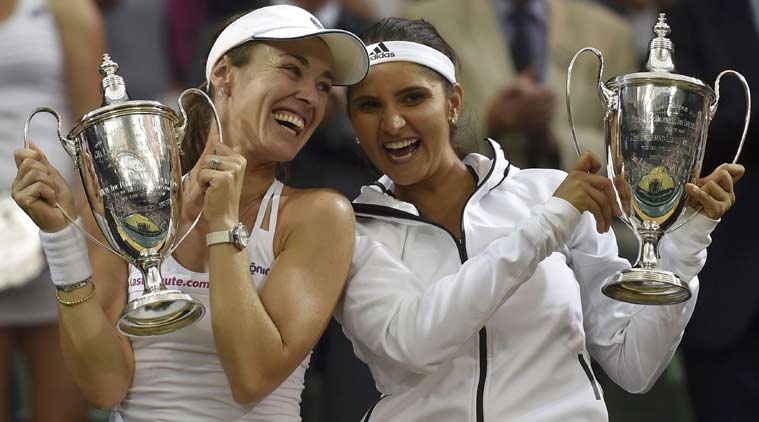WIMBLEDON WOES

The game of lawn tennis has invariably been associated with grandeur and elegance. It is believed to date back to centuries with several indicators suggesting the involvement of British royalty including Henry VII and Henry VIII in making the sport popular among the elite. The simultaneous ubiquity of croquet at the time signified ready supply of smooth outdoor courts, which proved easily adaptable for tennis. It was only a matter of time before tennis overthrew croquet and emerged as the more popular sport. In 1877, the world witnessed the first ever Wimbledon tennis championship organized by the All England Croquet and Lawn Tennis Club, that gave origin to a legendary legacy which is admired till date.
Besides being the oldest tennis tournament in the world, Wimbledon is widely considered the most prestigious. Wimbledon, a suburb on the southwestern outskirts of London, conjures images of a verdant grass court surrounded by stands that ensconce an array of passionate spectators, often composed of the haut monde and the upper class. Commenting on its magnificence, John Barrett, a former Wimbledon player and author of Wimbledon: The Official History, says that Wimbledon is the most sought-after title in tennis because it's "the granddaddy of them all.” It allows some of the greatest tennis players in the world to prove their calibre and take home the coveted title accompanied by a generous monetary accolade. “It is the history of tennis,” Barrett says.
However, in India, the country that was ranked third in the list of countries talking about Wimbledon in 2013, circumstances for players have never been particularly consolidating. According to a Facebook study, India is believed to be home to the second largest number of tennis fans in the world, yet the challenges faced by Indian players on their home turf are staggering. Apart from the skill and remarkable measures of physical and mental strength, a hefty amount of money is also an essential component demanded by the game of tennis. Given the deteriorating conditions of tennis courts and the ignorance of concerned authorities, it is no surprise that most professional players migrate abroad to train. Despite the 2016 Wimbledon championship being less than a month away, sources from the All India Tennis Association (AITA) revealed that the players representing India at the tournament hadn’t even been finalized. As stated by an AITA official, the Selection Committee meeting would be held on 11th June and only then would the final selections be made. This sounds astounding simply because players have to bank on a decision that would be made only two weeks ahead of the celebrated championship.
Frontline players including Mahesh Bhupathi and Rohan Bopanna were previously involved in a disagreement with the governing body and even boycotted the Davis Cup in 2013, in the hope of achieving a “comprehensible and long term understanding with the association” involving the players and their requirements. Following AITA’s acceptance of their demands, the players did, however, make themselves available and ended the boycott after an embarrassing spectacle.
Weighing in on the status of tennis in India, renowned tennis coach, Rajender Jaiswal, mentioned how there is little or no cooperation from major sports associations like AITA and the Sports Authority of India (SAI) in training players and improving the condition of tennis courts in the country. “If they ever do assist at the very least, it is only for major games such as the Olympics. Domestic training conditions are horrible, “he stated. Rajender Jaiswal was the National Umpire and Chief Coach at the Delhi Lawn Tennis Academy and has trained young champions like Yuki Bhambri, Ronit Bisht and Divij Sharan, among others. “It has become an entirely individual task to train players and maintain proper conditions for their coaching; coaches, and in some cases, the respective academy authorities are, are solely responsible for delivering the best they can in the midst of issues of funding and extreme weather conditions such as during summer,” added Jaiswal.
There are only a few grass courts in the country, primarily in places like the Delhi Gymkhana Club and the National Sports Club of India. Barring certain places in northern India, including Delhi and some parts of Punjab, tennis courts and training facilities are sparsely available. The situation only seems to be getting worse and reveals how limited the opportunities are for budding players, particularly for the ones from economically weak backgrounds, for they can’t even afford training.
Amit Beniwal, a 16 year old Indian player, currently ranked 1607 in the world in the Junior Circuit by The International Tennis Federation, speaking on the status of tennis in India said, “While it is a difficult task to manage the number of players there are across the nation, AITA and other sports bodies could definitely be of more help. Better domestic assistance would contribute more to national tennis.” Sponsored by acclaimed international sports brand Head, he also stated that it is a challenging task for players to get sponsors for themselves, especially since a lot of money is involved in the sport.
Information from some of the most significant stakeholders in this scenario has established that a lot of obstacles need to be met to train players and to further usher them towards receiving national and international acclaim. Based on the current situation, a certain revival of the court and related facilities combined with more active, necessary intervention by concerned authorities is likely to be effective and beneficial for the players, and in the larger context, for the entire nation. There is no lack of talent, no lack of the will to showcase prowess either; immediate action and necessary attention are the only two ingredients required in the quest of making Indian players shine before the world.



